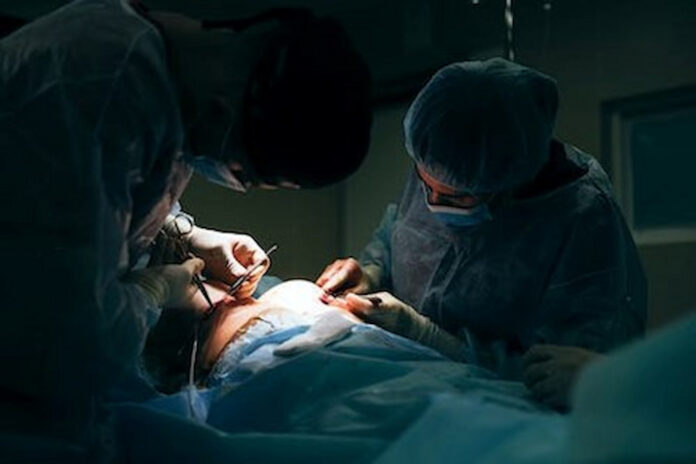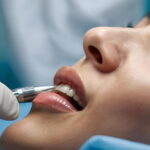Taking the plunge to get a breast augmentation isn’t just about changing your appearance. Nope, it’s also about feeling good about yourself. You might want more oomph in your figure or to bring back what life’s worn away. Yes, it’s a big, personal decision, but it can be life-changing.
Our detailed guide is here to hold your hand through the whole process. From picking out the best doctor to getting used to the new you—we’ve got your back. After all, you deserve nothing but the best for your body and happiness. So, let’s get started with this prep guide for breast augmentation.
According to the study, breast augmentation was the top cosmetic surgical procedure in 2020, with 193,073 procedures done.
What is Breast Augmentation?
Breast augmentation enhances the size and shape of the breasts. It is typically achieved by inserting implants under the breast tissue or chest muscles. Besides increasing breast size, the procedure can help restore breast volume lost after weight reduction or pregnancy. The goal of breast augmentation is often to improve self-confidence and body image.
Choosing the Right Surgeon
You need to find a professional with the necessary skills and understanding of your expectations and concerns.
- Check Qualifications
- Review Experience
- Understand Approach
- Comfort Level
Understand the Procedure
Once you have selected a surgeon, you should discuss all the details of the breast augmentation procedure. This includes where your incisions will be made, what type of implant will be placed, and any potential risks involved. Your surgeon should also explain the recovery process in detail and answer any questions you may have.
Selecting the Type of Implants
The type of implants you choose can significantly impact your satisfaction with the results. They vary in material, size, shape, and profile, each influencing your breasts’ final look and feel.
– Consider the materials: Implants can be made from saline (salt water), silicone, or more modern materials like cohesive silicone gel (often referred to as “gummy bear” implants). Each has its unique feel and aesthetic effect.
– Think about the size: Breast implants come in various sizes, typically measured in cubic centimeters (cc). Smaller implants might be around 200cc, while larger ones could reach 800cc or more. The right size depends on your body type, original breast size, and personal preference.
– Discuss the placement: Implants can be positioned in different locations:
– Subglandular placement puts the implant behind the breast tissue but in front of the chest muscle.
– Submuscular placement situates the implant under the chest muscle.
– Subfascial placement places the implant beneath the fascia (connective tissue) but above the chest muscle.
Preoperative Measures
Preparing for breast augmentation surgery is like training for a big race. Here are some of the key things you should focus on to set yourself up for a successful surgery and smooth recovery:
– Quit Smoking: Aim to quit at least six weeks before your surgery if you’re a smoker. Smoking can interfere with your body’s ability to heal.
– Limit Alcohol: Avoid alcohol as it can increase your risk of bleeding and other complications.
– Healthy Eating: Make sure your diet is balanced and nutritious. A healthy body can better cope with surgery and recover more quickly.
– Regular Exercise: Stay fit and active, but avoid strenuous activities close to your surgery date.
– Hydrate: Drink plenty of fluids. Being well-hydrated can aid in recovery.
– Medication Review: Discuss with your surgeon any medications or supplements you take. They might ask you to stop certain ones before your surgery.
– Prepare Your Home: Set up a comfortable recovery space at home. It might include extra pillows, easy-to-prepare meals, and entertainment to keep you occupied as you recover.
– Arrange Help: Organize a friend or family member to drive you to and from the hospital and assist you in the early days of your recovery.
Postoperative Care
After the surgery, proper care and rest are necessary. Follow your surgeon’s advice diligently to ensure a successful recovery. Your surgeon will give you specific guidelines, but here are some general postoperative tips for breast augmentation:
– Rest: Your body needs plenty of downtime. Make sure you get ample sleep and avoid strenuous activities.
– Medication Management: Take your prescribed pain relievers and antibiotics on time. These medications will help manage discomfort and prevent infection.
– Supportive Clothing: Wear a surgical bra or a compression bandage as your surgeon advises. It can help reduce swelling and support the new breast contour.
– Monitor Changes: Regularly check for signs of infection, such as redness, increased pain, swelling, or discharge from the incision site. If you notice anything unusual, contact your surgeon immediately.
– Follow-up Visits: Don’t miss your postoperative appointments. These allow your surgeon to monitor your progress and address any concerns.
– Limit Arm Movements: Avoid raising your arms above your head for the first few weeks post-surgery. It can prevent strain on your healing incisions.
Healing Stages for Breast Augmentation
Breast augmentation healing doesn’t happen overnight. It is a process that occurs over several stages, each marked by signs of progress and particular care needs.
| Stage | Timeline | What to Expect | Care Tips |
|---|---|---|---|
| Immediate Post-op | 24-48 hours | You might feel groggy and sore. Swelling, bruising, and discomfort are common. | Rest, take prescribed medications, and wear a surgical bra. |
| Early Healing | 1-2 weeks | Swelling and bruising start to subside. Pain should lessen. | Continue pain meds as needed, limit physical activity, and wear supportive clothing. |
| Active Healing | 3-6 weeks | You’ll start to feel better and may return to most daily activities. Some swelling may remain. | Gradually increase activity levels, avoid strenuous exercises, and continue monitoring for complications. |
| Long-term Healing | 3-6 months | The swelling should be mostly gone. Scars begin to fade but are still visible. | Maintain a healthy lifestyle, moisturize the scar, wear supportive bras, and have regular check-ups. |
Conclusion
As we wrap up, remember that your journey through breast augmentation is as unique as you are. Every step you take, from deciding to embracing the new you, is a testament to your strength and resilience. It’s not just about physical change—it’s about rediscovering your confidence and empowering yourself to live on your terms. Remember, preparation is the key to a successful surgery and a smooth recovery, and you’re not alone in this journey. Experts, support groups, and plenty of resources are at your disposal. So here’s to you, your decision, and your journey—may it bring you the satisfaction, confidence, and happiness you seek.
Read Also
- The Future of Men’s Health: Why Telehealth Is Here to StayTelehealth isn’t just a pandemic trend that faded into the background. For Australian men, it has become one of the most practical, time-saving, and stress-free ways to manage everyday health — and it’s shaping the future of how we access care. Platforms like DOCTO, an Australian online doctor and specialist telehealth service, are leading the… Read more: The Future of Men’s Health: Why Telehealth Is Here to Stay
- How to Build a Simple, Clean Skincare Routine ?You don’t need a complicated skincare routine. It doesn’t have to be something that requires twenty different products and confusing steps. Your routine works well with just a few high-quality clean ingredients. The beauty industry keeps pushing more products, but your skin actually needs less. You only need a simple approach to get better results… Read more: How to Build a Simple, Clean Skincare Routine ?
- How Preventive Dental Care Supports Overall HealthHave you ever wondered how a simple dental checkup could impact your entire body? Oral health is more than just a bright smile. Studies show that poor dental habits can contribute to serious health problems. Gum disease and tooth decay are linked to heart disease, diabetes, and infections. Yet, many people overlook preventive dental care.… Read more: How Preventive Dental Care Supports Overall Health
- Seeing Clearly in a High-Tech World: A Deep Dive into Advanced Vision Care ServicesProtecting your eyesight isn’t optional—it’s essential. Modern eye care has evolved far beyond basic exams, offering advanced diagnostics, personalized treatments, and surgical innovations that keep vision sharp for life. A leading example is Intermountain Eye Center, home to specialists like Dr Fishburn Boise, where patients receive comprehensive, high-level vision care designed to preserve long-term eye… Read more: Seeing Clearly in a High-Tech World: A Deep Dive into Advanced Vision Care Services
- Why the Keto Diet Works for Some People—and Fails Dramatically for Others: An Ayurvedic Breakdown for Modern HealthcareThe keto diet has dominated weight-loss culture for years. For some people, it produces rapid fat loss, stable energy, and improved mental clarity. For others—especially those who gain weight easily—it leads to burnout, digestive distress, rebound weight gain, high cholesterol, and a metabolism that feels slower than before. Healthcare often frames this as a discipline… Read more: Why the Keto Diet Works for Some People—and Fails Dramatically for Others: An Ayurvedic Breakdown for Modern Healthcare






